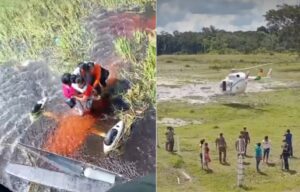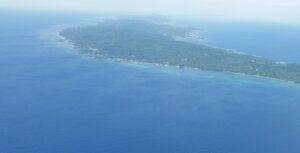Hiroo Onoda was barely 18 when he enlisted in the Imperial Japanese Army Infantry. At the time, he was just one of many too-young men sent off to support the Japanese war effort. But Onoda so distinguished himself that he has become almost a myth. Everyone has heard something about him, but few know the story of the soldier who spent decades fighting a war which had ended years earlier.

A young Hiroo Onoda.
Born in 1922, Onoda was quickly singled out for special intelligence training. He learned guerrilla warfare, philosophy, history, martial arts, propaganda, and covert operations. In 1944, now an officer, he was sent to Lubang Island, 150km southwest of Manila in the Philippines, during the waning months of World War II.
Onoda’s orders were clear: to hamper enemy attacks on the island (including destroying the airstrip which he arrived on), and never to surrender or take his own life.
“I became an officer and I received an order. If I could not carry it out, I would feel shame. I am very competitive,” Onoda said decades later, in 2010.
That one command was Onoda’s driving force. He engaged in guerrilla warfare, and in 1945, when Japan surrendered, Onoda thought it was a ruse, so he continued living by that same rule — never surrender.
To inform such soldiers, hidden in the jungle, that they could now return home, Japan dropped leaflets from the air. But Onoda still didn’t believe the news.
“The leaflets they dropped were filled with mistakes, so I judged it was a plot by the Americans,” he said. Onoda was sure that the leaflets were Allied propaganda, aimed at capturing Japanese soldiers.
Together with three other soldiers, Onoda continued fighting a guerilla war. They survived off bananas and coconuts, and pilfered rice from local farmers. They killed 30 island inhabitants over the years and evaded police shootouts.
In 1950, one of the other rogue soldiers he was with, Yuichi Akatsu, surrendered to Filipino forces. Onoda thought that this could pose even greater danger to him and he became even more cautious.
Another of the soldiers, Shōichi Shimada, was shot dead in 1954 by island police officers. Then Private First Class Kinshichi Kozuka, his final ally, was also shot by local police much later, in 1972. Each incident further cemented Onoda’s idea that the war continued.
For 29 years, Onoda stayed in the jungle, mostly living in underground caves. He spent his time gathering intelligence on enemy movements, as his job required him to do. For his final two years, he was alone.
Onoda showed characteristics rarely seen in the modern world, but those which make the very best soldiers; asceticism, undeviating will, obedience, loyalty, and sacrifice. However, the skills he learned in his early training ultimately proved critical to his survival.
“Every Japanese officer is prepared for death, but as an intelligence officer I was ordered to conduct guerrilla warfare and not to die,” he later explained.
Onoda was officially declared dead in 1959, but a Japanese student, Norio Suzuki, refused to believe it. In 1974 — almost 30 years after World War II had ended — he set out to locate the missing soldier. Incredibly, he managed to track Onoda down just four days after beginning his search.
The pair quickly became friends, but Onoda told Suzuki that he would only surrender after receiving official orders. Suzuki returned to Japan with photos to prove their encounter and to locate Onoda’s still surviving commanding officer, Major Yoshimi Taniguchi, for whom the war had long ended.
The following spring, Suzuki returned with Taniguchi, who officially relieved Onoda of his duties, after which a weeping Onoda surrendered. With him were a sword, a functioning Arisaka Type 99 rifle, 500 rounds of ammunition, several hand grenades, and the dagger that his mother had given him in 1944 to kill himself if he was captured.
“It may take three years, it may take five, but whatever happens we’ll come back for you,” Major Yoshimi Taniguchi had promised the young Hiroo Onoda at the beginning of his service. True to his word, Taniguchi returned for him, at long last.

Onoda leaves the jungle in 1974 for an uncertain future.
When Onoda returned to Japan in 1974 at the age of 52, he was still wearing his old Imperial uniform. He was pardoned by then-President Marcos of the Philippines for the crimes committed while he still believed that he was at war. His family, who had thought he was dead, saw him for the first time since he was a 22-year-old.
With Japan now an unrecognizable modern state, Onoda struggled to adapt. A year after his return, he moved to a Japanese colony in São Paulo for a more tranquil life. He even met a Japanese woman there, whom he married. Until his death in 2014, the couple lived between both countries.
When asked in 1974 what was going through his mind for those 29 years in the jungle, Onoda said simply, “nothing but accomplishing my duty.”

A distinguished-looking Hiroo Onoda in later life.






